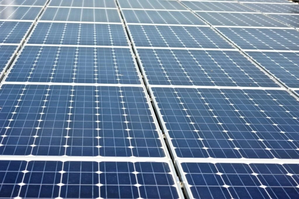New Delhi, Feb 6 (IANS) India’s solar cell manufacturing capacity is set to touch 50-55 GW by fiscal year 2027, up five-fold from 10 GW at the end of fiscal 2024, propelled by the government’s policy thrust to reduce imports of cells and modules, according to a Crisil Ratings report released on Thursday.
The expansion will entail a capital expenditure (capex) of Rs 28,000-30,000 crore, likely to be funded through a 70:30 debt-equity mix. Healthy balance sheets and robust cash accrual will support credit quality.
The estimate is based on a Crisil Ratings study of four domestic cell manufacturers, which accounted for 54 per cent of total cell manufacturing capacity as on March 31, 2024.
The ‘Make in India’ initiative, bolstered by policy measures aimed at reducing imports of cells and modules, will drive backward integration strategies of module manufacturers, leading to higher domestic cell capacity, the report states.
India’s module-making capacity had increased to 60 GW by March 2024 from 7 GW in March 2020. This has ensured module imports decline to 25 per cent of total consumption this fiscal from 45 per cent in the last. However, the import of cells – a key input for module manufacturing – mostly from China, remains high at around 80 per cent.
With domestic cell supply inadequate, import dependence could rise given likely renewable capacity addition, the report added.
Crisil Ratings Director Ankit Hakhu said: “To boost domestic demand and cell-making capacity, the government has mandated the use of cells only from its approved list of cell manufacturers (ALCM) in open access and net metering projects and projects where it is either providing funding assistance or acting as a counterparty. Among other measures, the Production-Linked Incentive (PLI) scheme and domestic content requirement, too, will invigorate local manufacturing. All these have led to cell capacity expansion announcements of 45-50 GW, which will take India’s overall cell-making capacity to around 55 GW over the next two fiscals.”
The increase in cell capacity will enhance self-reliance as well as cell-level integration. For instance, in a domestically manufactured cell, potentially 70-80 per cent of the module cost can get captured within India (vis-a-vis only 40-50 per cent without it). Plus, the proportion of domestic module capacity supported by domestic cell capacity is expected to increase to more than 50 per cent from less than 15 per cent in fiscal 2024.
The report also states that at current price levels, the domestically manufactured cells are expected to be 80-90 per cent pricier than imported cells because of the higher conversion cost of wafers to cells, given the lower economies of scale in India initially and dumping by China. Thus, while the expected benefits of PLI and other government schemes may enable manufacturers to partially absorb higher costs, solar project developers may still face some increase in project cost.
“Therefore, continued policy support in the form of non-tariff barriers such as ALCM and ALMM is crucial to prop up demand for domestically manufactured cells and modules. Plus, changes in the US trade policies following the recent regime change and disruptions to wafer supplies, which are largely imported from China, will bear watching,” the report added.
–IANS
sps/vd































